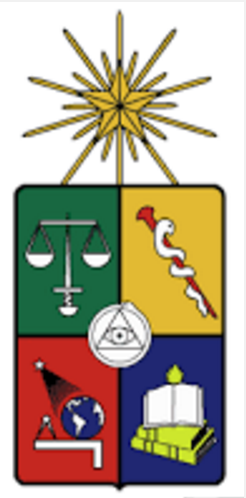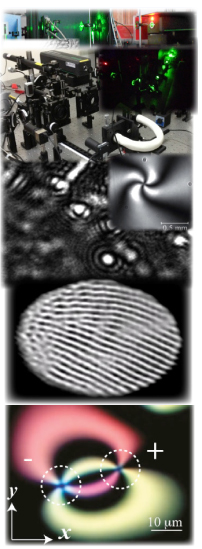
|
Nonlinear optics is nowadays one of the most active fields of research in Physics and Engineering. Since the discovery of the laser in the sixties, which allowed the early studies on the response of materials on high power electromagnetic fields. Nonlinear Optics has developed nowadays to a wide extent, involving fundamental research in the study of light-matter interaction and applicative research in the cutting edge domains of future technologies, such as photonics, optical communications systems, optical storage and interconnect, biomedical imaging and art diagnostics. LAFER is a laboratory devoted to developing a series of research activities in the field of Liquid crystal Nonlinear Optics and especially on the study of the complex spatiotemporal dynamics and defects dynamics that arise in spatially extended systems when a significant degree of interconnection is established between different parts of the optical wavefront. Lafer has
founded in mid-2012 thanks to the project between the French and
Chilean government ANR-39 CONICYT, and financial support from FONDECYT,
Facultad
de Ciencias Físicas y Matematicas
and the Department
of Physics
at the University of Chile. This adventure has been developed through
the scientific support of international partners Stefania
Residori
and Umberto
Bortolozzo
(INLN, Nice, France) and Eric
Louvergneaux (Lille,
France). At present, the laboratory has been economically supported
by the FONDECYT and Millennium Institute for Research in Optics
(MIRO). LAFER is located in the basement of the DFI
building, with two rooms surface of 20 m2 Currently, in this laboratory, four setup are implemented: a liquid crystal light valve with optical feedback, a dye-doped liquid crystal cells under intense rays of light, cells with carved electrodes and nematic liquid crystal cells to study the vortices dynamics. Keywords: Optical pattern formation, phase singularities, phase transition, front propagation, defects dynamics, light induces phenomena, photo-isomerization, and rare events in optical liquid crystals.
|
|
 |

